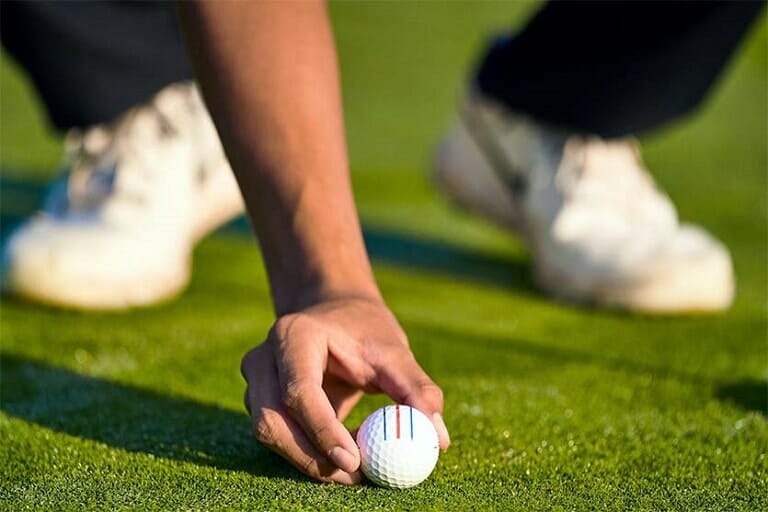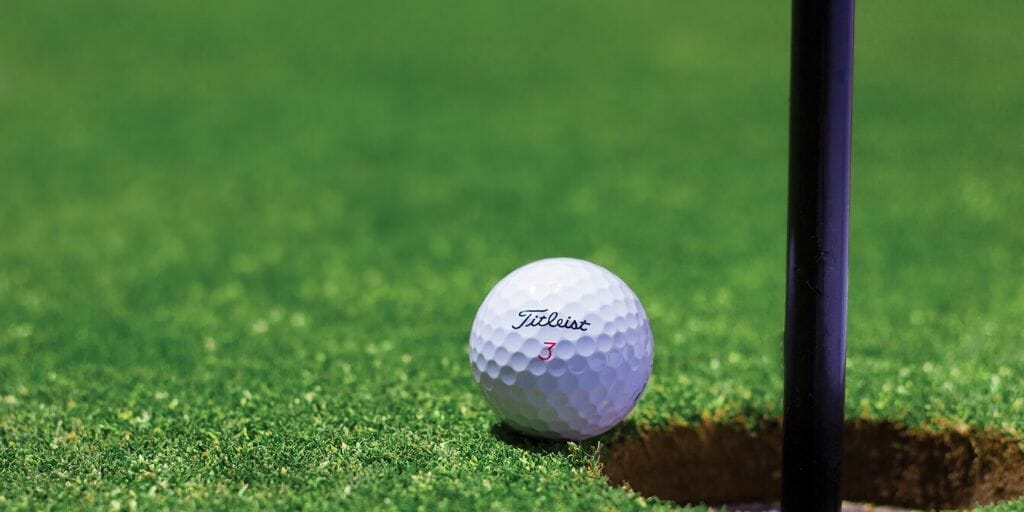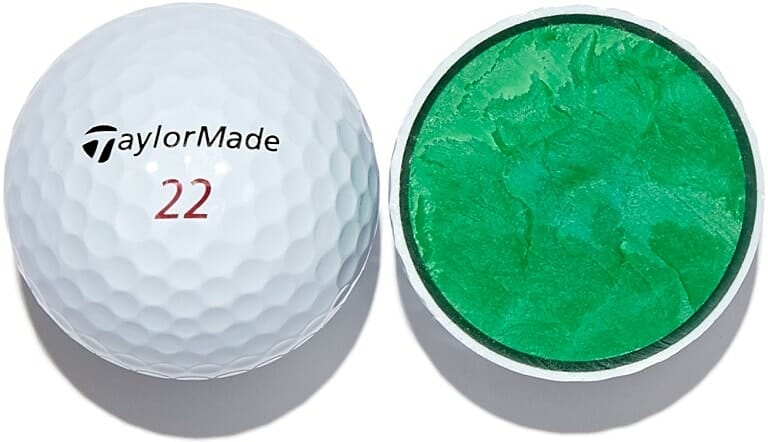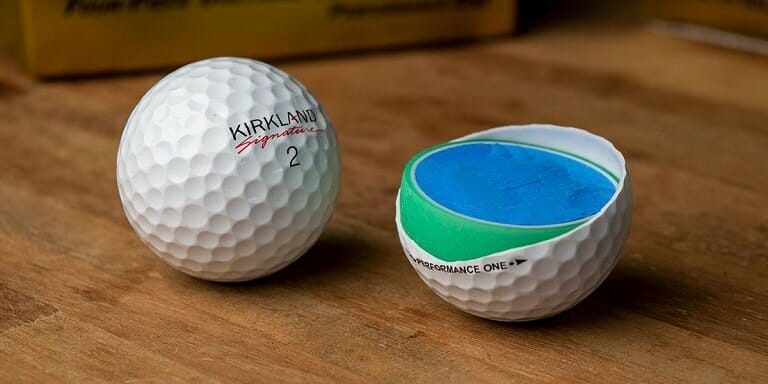There’s just no denying that, with each passing year, every renowned golf equipment manufacturing company designs more and more advanced golfing gear. So it’s only logical and common for golfing enthusiasts to raise certain questions. Such as what is the diameter of a golf ball? With so many new designs coming up, is the size of the balls the same?
Other relevant questions also come up. Like has the size of golf balls remained the same throughout history? Once you reach the end of this article. You’ll know everything there is to know about the size, weight, diameter, and even dimples of a golf ball.
What Is the Diameter of A Golf Ball – Current Rules On the Size of Golf Balls

Did you know that there was no standard size of golf ball until the year 1990? It’s only then that both R & A and USGA established one. Before that, the minimum golf ball diameter accepted by USGA was 1.68 inches. And that by R & A was 1.62 inches.
The minimum size of a golf ball was based on the notion that smaller balls would be theoretically easier for fitting into the diameter of a golf hole.
As for today, what is the diameter of a golf ball? Based on the strict regulations of USGA and R & A.
- The diameter should not be below 1.68 inches.
- The mass or weight should not be above 1.620 ounces.
Do All Golf Balls Have the Same Diameter/Size?

The answer is both no and yes. Allow me to explain.
Ask any professional or ardent golfer who’s in possession of golf balls from the 80s. And he/she will tell you that they have various sizes of golf balls in their arsenal.
Based on the current rules and scenario, there is one accepted standard golf ball circumference. That’s legal in golfing tournaments. And that’s also authorized for sale in all golf shops. And that standard size, as you already know, is 1.68 inches. Back in the days, it used to be 1.62 inches as well.
But in terms of visuals, if I hold both the sizes in my hand. It’s highly unlikely that anyone would be able to differentiate between the two.
Difference Between Types of Golf Ball Construction
So there are 2-piece and 3-piece golf balls. Along with multi-layered golf balls as well.
So let’s find out what each of them means…
1. 2-Piece Golf Balls

These types of golf balls consist of a core and cover or shell around it. No doubt, 2-piece construction balls are sturdy and fly straighter. In fact, they even spin less. No wonder the 2-piece design is such a suitable option for beginners and high handicappers. Those who prioritize distance over feel.
You should also know that 2-piece golf balls don’t offer that perfect feel around or on the green. This explains why more experienced golfers don’t opt for 2-piece construction. But let me tell you that it’s the most affordable choice. In comparison to the different types of golf balls.
2. 3-Piece Golf Balls

Needless to say, the 3-piece structure offers a better feel. Along with that, 3-piece golf balls don’t compromise distance. However, they spin quite a bit. The spin is higher than in the case of its 2-piece counterpart. Yet lower than multi-layered golf balls.
So who should play with 3-piece golf balls? In my opinion, mid-handicappers that give precedence to distance. As well as a soft feel during putting.
No doubt, the 3-piece version is a slightly more expensive option. But the higher performance kind of justifies the higher cost.
3. Multi-Layer Golf Balls

The most expensive of the lot, multi-layer golf balls are an ideal choice for low to mid handicappers. Meaning golfers with faster swing speed. The core layers of the ball elevate feel and control.
On top of that, these balls have a thinner cover. That enhances spin control. And offers a soft and crisp feel. But you better not lose them. As they cost nearly the same amount as your single round of golf.
Commonly Asked Questions About the Size of Golf Balls
Q1. What are the best golf balls for beginners and intermediate golfers?
As a newbie, you should choose golf balls that boost your confidence levels. To be more specific, golf balls with a lower compression rating. As it offers greater control. Irrespective of the size of the ball.
Go for smaller sized golf balls i.e. 1.58-inch ones. These are the more fitting for golfers who wish to achieve a good aim.
Senior players often select 1.73 inches as their golf ball diameter. Since this particular size is a more comfortable option to strike.
Have you have been playing golf for quite some time now? Then it’s possible that you consider yourself to be sufficiently proficient. If that’s the case, you should try to up the level of your game. Simply by not purchasing a ball meant for beginners.
And that means going for the standard golf size. The standard size or diameter is 1.68 inches. With either high or medium compression.
Q2. Are British golf balls smaller?
Just like American golf balls, even British golf balls can have a smaller diameter than 1.68 inches. I’m sure you already know by now that golf balls are designed in various sizes. And this doesn’t just apply to the US. But the UK as well.
However, the 1.68-inch diameter is a universally accepted standard. It applies to all professional golfing competitions and tournaments throughout the world.
Q3. How many dimples does a golf ball have?
As far as golf ball dimples are concerned, their density, depth, and size are different. But there aren’t any strict rules regarding the number of dimples. It’s the type of golf ball that decides this particular factor. Along with the manufacturer of course.
Generally, a golf ball with the standard 1.68-inch diameter consists of dimples between 200 and 500. Needless to say, the same manufacturer can design two golf balls with a dissimilar number of dimples. However, most brands don’t exceed 336, which is the average number of dimples per golf ball.
The End
So what is the diameter of a golf ball? According to R & A and USGA regulations, it shouldn’t be above 1.68 inches. But don’t be surprised to come across balls that are bigger or smaller in size. That might happen. Irrespective of the size though, golf balls are round and small always.
Just so you know, I have discussed more than just the size of golf balls in this post. You can also find out the different types of golf balls. Such as 2-piece, 3-piece, and multi-layer. Then I have answered some of the most frequently asked questions about golf ball size as well.
Read more:
Matt Stevens is the founder of Golfrough.com. He holds a Postgraduate in Sports Marketing and has played golf since he was four years old. Having experienced every high and low golf has to offer, his writing helps the average golfer avoid the mistakes he has made in 28-years on the course.

